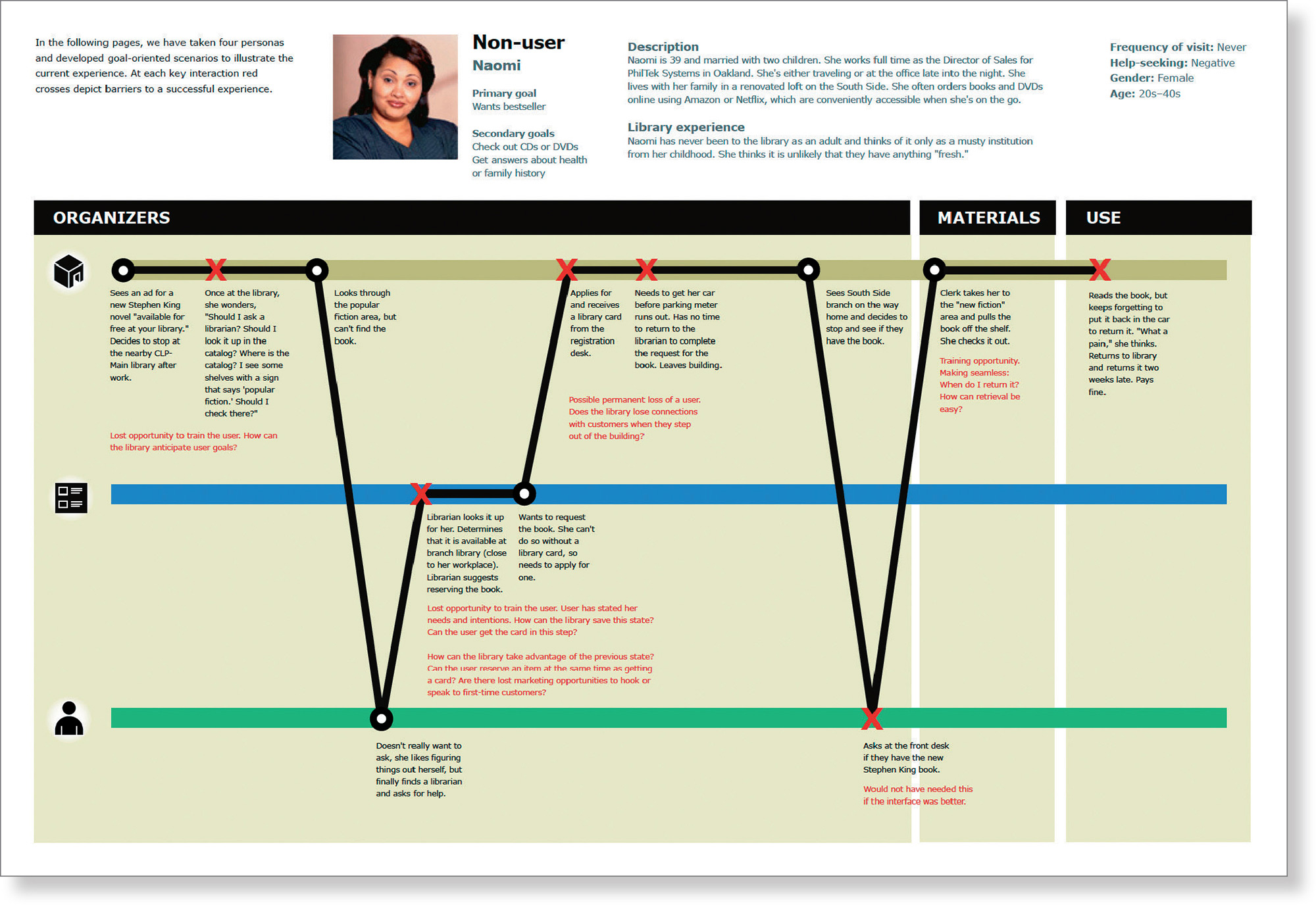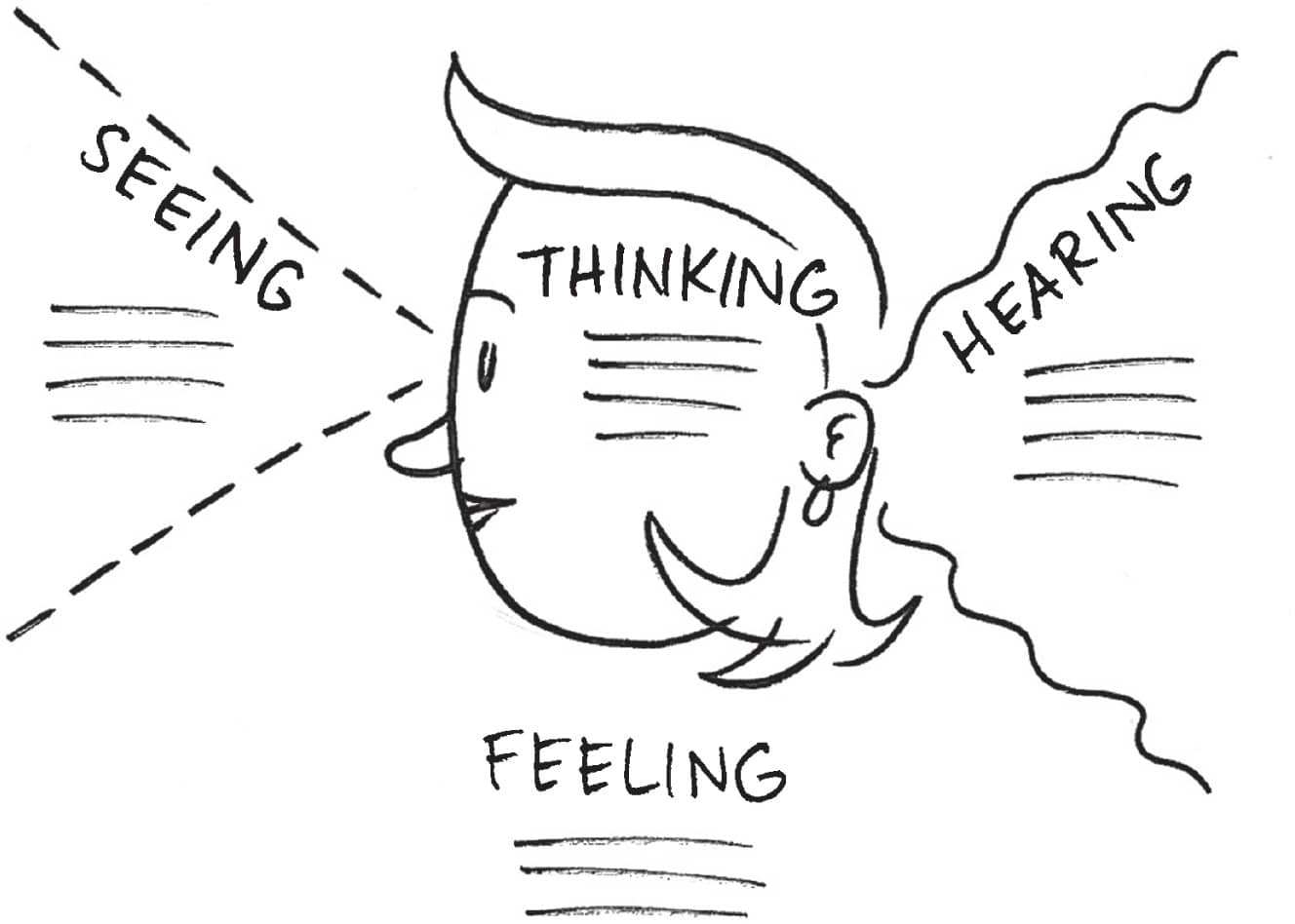RESEARCH DELIVERABLE
73 Scenarios

A scenario is a narrative that explores the future use of a product from a user’s point of view, helping design teams reason about its place in a person’s day-to-day life.
A scenario is a believable narrative, usually set in the future, of a person’s experience as he or she engages with a product or a service. Ultimately, the purpose of writing scenarios is to make design ideas explicit and concrete, so that the design team can empathetically envision the future ways in which a product is likely to be used. When referred back to throughout the development process, scenarios serve as an anchor for the team to revisit the product’s future use.1 In this way, scenarios help teams avoid the tendency to design toward technical requirements, and instead focus efforts on building culturally meaningful artifacts that augment actual day-to-day human activity.
Scenarios are flexible, and take on many variations. Written like a story with few visuals, it is generally agreed that scenarios should be written from a persona’s point of view, and focus more on what technology enables than the details of the technology itself. Each persona should get at least one scenario that explores the baseline, status-quo situation for that persona, but writing realistic scenarios about high-stress situations where conditions are less than optimal is also recommended. Once framed by a specific persona’s point of view, scenarios can be written to follow a traditional story arc. The action begins with a trigger event, which sets the scene and preconditions, and ends with the resolution of a task by using an intervening technology that assists (and hopefully delights) the persona. Scenarios, therefore, serve to bring personas to life; both deliverables reinforce the value of the other.
Like personas, scenarios and storyboards also work well together, and both serve to communicate the user’s point of view. Scenarios inform and guide the production of highly visual storyboards, and in this way, the two supplement each other.
Writing successful scenarios asks that we tap into our capacity for human empathy and to write stories about a superior, future state that ultimately delights people. Scenarios can be used successfully on projects with even the tightest budgets, and although they are most reliable when informed by research and research-backed personas, they can be written based on the design team’s understanding of their target users. Scenarios are a widely used strategic planning tool,2 and are a powerful method to align teams to a shared product vision and goal—whether it is a few months, or a few years, away.
1. Carroll, John M. Scenario Based Design: Envisioning Work and Technology in System Development. New York: Wiley, 1995.
2. Schwartz, Peter. The Art of the Long View: Planning for the Future in an Uncertain World. New York: Currency Doubleday, 1996.
Further Reading
Carroll, John M. Making Use: Scenario-Based Design of Human Computer Interactions. Cambridge, MA: MIT Press, 2000.
Goodwin, Kim. Design in the Digital Age: How to Create Human-Centered Products and Services. Indianapolis, IN: Wiley & Sons, 2009.

A scenario for a customer-centered project on the library experience.
Courtesy of MAYA Design

“Seeing, Thinking, Hearing, Feeling” framework that designers can use when thinking about and constructing scenarios.
Courtesy of XPLANE | Dachis Group © 2011
